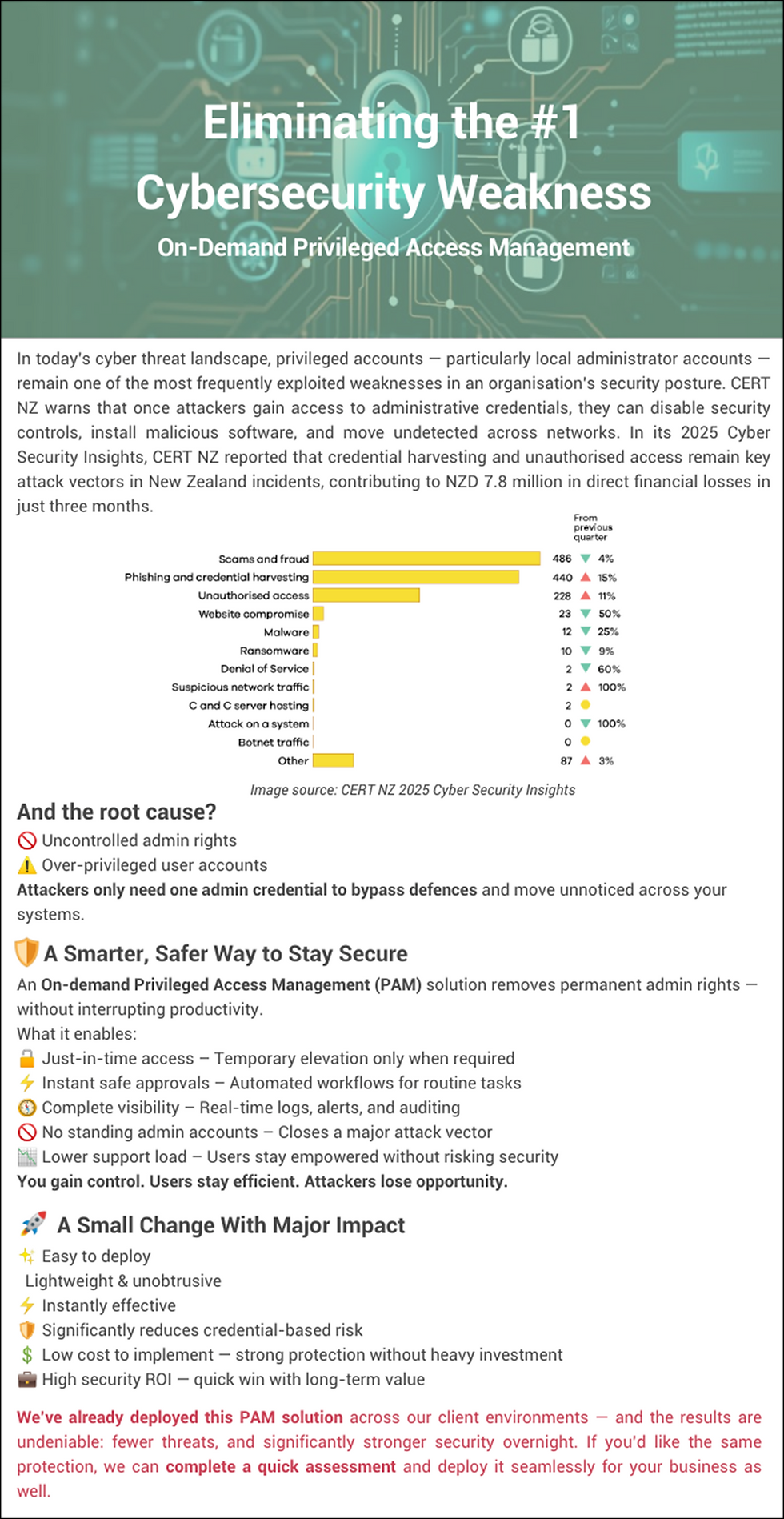The Rising Threat of Cyber Crime in New Zealand
- sumeetnarayan5
- Dec 4, 2024
- 3 min read
Cybercrime is a growing concern globally, and New Zealand is no exception. The country has experienced a significant increase in cyberattacks, with financial losses climbing steadily.
According to the CERT NZ 2024 Q2 Cyber Security Insights report, cyber incidents resulted in reported losses exceeding NZD 13 million in the first half of 2024. Unauthorized access incidents alone accounted for NZD 3.6 million, highlighting the seriousness of this threat. The report further reveals that large-scale incidents, each resulting in losses over NZD 100,000, contributed to over 70% of total losses during this period (CERT NZ, 2024).

Economic Impact of Cyber Crimes
The financial and economic impact of cybercrime is immense. Besides direct financial losses, businesses incur additional expenses for data recovery, legal proceedings, and damage control.
In 2024, CERT NZ observed a 22% decrease in overall reported incidents compared to the previous quarter, yet the financial losses continue to grow due to the increasing sophistication of attacks. The organization emphasized the need for businesses to strengthen their cybersecurity frameworks to prevent unauthorized access and other malicious activities (CERT NZ Quarterly Insights, 2024).
Common Types of Cyber Crimes in New Zealand
To effectively combat cybercrime, it is essential to understand the most prevalent types in New Zealand. These attacks target both individuals and organizations, leading to financial loss, data breaches, and reputational damage.
1. Phishing Attacks
Phishing remains one of the most common and damaging forms of cybercrime. Cybercriminals use deceptive emails, messages, or fake websites to trick individuals into revealing personal information such as passwords, credit card numbers, or login credentials.
In 2023, CERT NZ recorded over 7,000 phishing incidents, indicating that Kiwis continue to fall victim to these scams despite increasing awareness campaigns (CERT NZ Annual Report, 2023).
2. Ransomware
Ransomware attacks involve malicious software that encrypts a user’s files, demanding payment for decryption. These attacks have increasingly targeted critical infrastructure and essential services.
According to a 2024 cybersecurity report, ransomware incidents accounted for over NZD 2 million in losses across sectors, with some organizations paying hefty ransoms to regain access to their data (National Cyber Security Centre (NCSC), 2024).
3. Identity Theft
Identity theft involves the unauthorized use of personal information to impersonate victims for financial gain, such as opening fraudulent accounts or making unauthorized transactions.
CERT NZ reports indicate that identity theft cases have doubled over the past three years, driven by data breaches and increased online activity during the COVID-19 pandemic (CERT NZ Quarterly Insights, 2024).
4. Business Email Compromise (BEC)
BEC attacks involve cybercriminals impersonating trusted parties to deceive employees into transferring funds or disclosing sensitive information.
These attacks typically target finance or HR departments and have led to losses exceeding NZD 1.5 million in a single quarter in 2024, making them one of the costliest forms of cybercrime (NCSC Incident Report, 2024).
Protective Measures and Best Practices
Combating cyber crime requires collaboration from everyone, including individuals and organizations. Here are some practical steps to enhance cybersecurity:
Educate Yourself and Staff: Regular training sessions on how to identify phishing attempts, recognize suspicious links, and follow online security best practices can significantly reduce your risk of falling victim to social engineering attacks.
Implement Strong Password Policies: Implement a password policy that requires complex, unique passwords and encourages regular updates. For enhanced security, integrate multi-factor authentication (MFA) across all critical systems.
Invest in Cyber Security Solutions: Proactive investment in advanced security solutions like endpoint protection, intrusion detection, and cloud security to safeguard against evolving risks.
Regular Data Backups: Establish automated, secure backups to ensure critical data can be recovered quickly in the event of a ransomware attack or system failure.
Stay Informed: The cyber threat landscape is constantly evolving. Keep track of news and updates regarding new cyber threats to remain aware of potential risks.
By taking these protective measures, individuals and businesses can build a strong defense against cyber crime.
What the Government is Doing
The New Zealand government is actively working to combat cybercrime through the National Cyber Security Strategy, which focuses on enhancing the nation’s cybersecurity posture and safeguarding critical infrastructure. Collaboration between public and private sectors is crucial in this effort, with agencies like CERT NZ playing a pivotal role in disseminating information and providing actionable advice (CERT NZ News and Updates).
Why Understanding These Threats Matters
Small and medium-sized businesses (SMBs) are prime targets for cyberattacks due to limited resources and less robust security frameworks, making them vulnerable to threats like phishing, ransomware, and business email compromise (BEC). These attacks can lead to significant financial losses, operational downtime, and reputational damage, with some incidents costing businesses over NZD 1.5 million per quarter. Investing in cybersecurity not only protects against these risks but also enhances business continuity, builds customer trust, and ensures compliance with industry regulations. By adopting proactive measures such as risk assessments, employee training, and 24/7 network monitoring, SMBs can safeguard their operations and thrive in today’s digital landscape.



